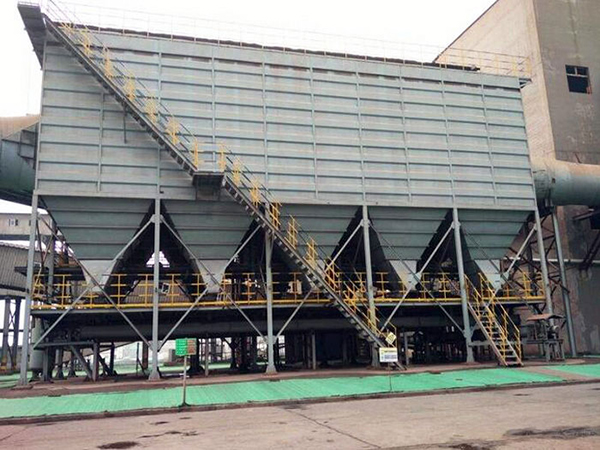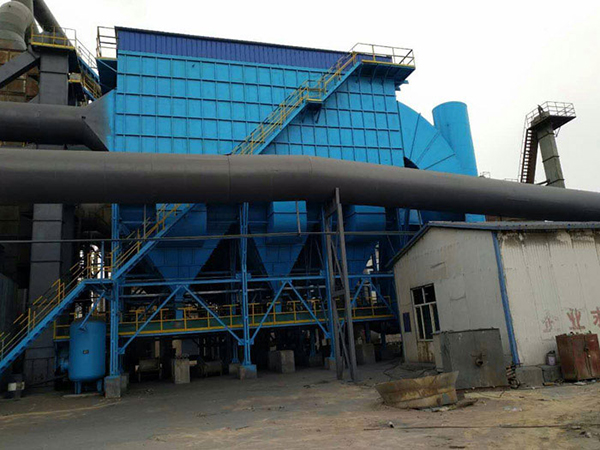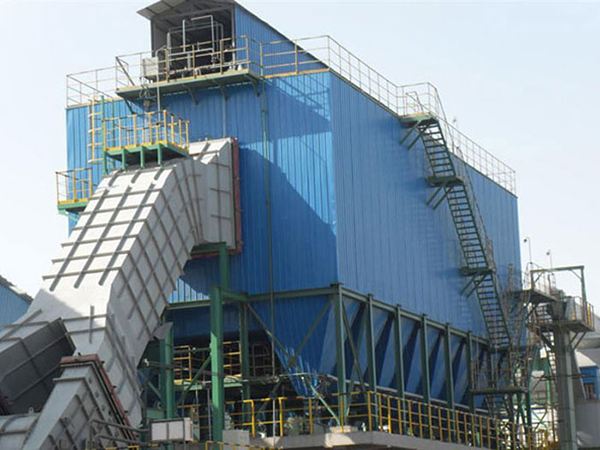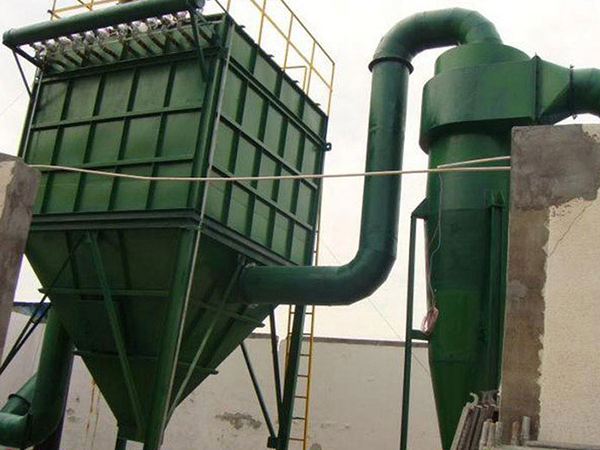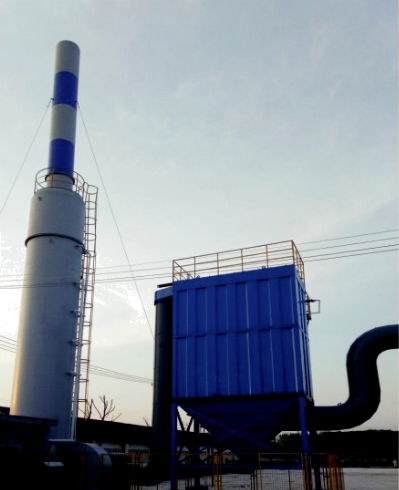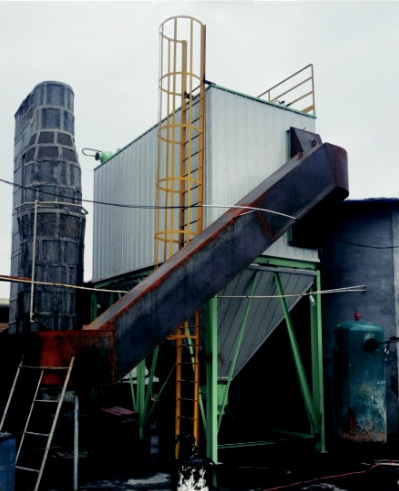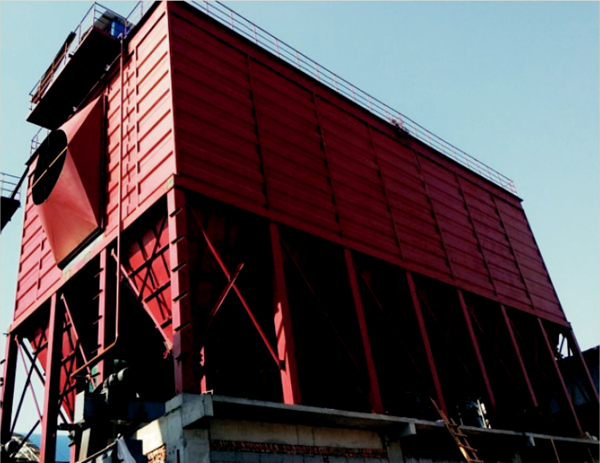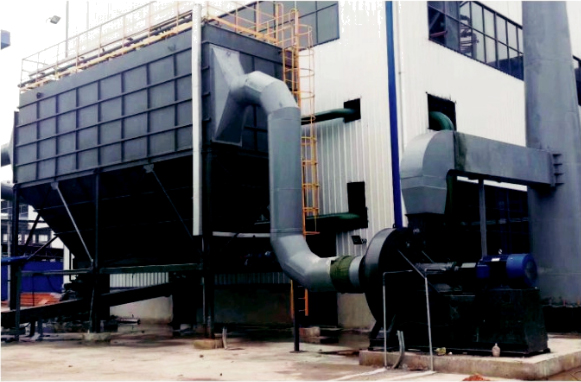Control conditions and structure characteristics of dust remover for biomass boiler
The dust remover of biomass boiler treats the flue gas produced in the production process of each boiler separately. Flue gas from boiler. The dust enters the cyclone through the dust collection pipe. At this time, the large particles in the dust are separated under the centrifugal force of the cyclone, and the large particles are discharged by the cyclone. The fine particle dust enters the bag filter. After the filter bag is filtered, the dust adhering to the surface of the bag is first concentrated in the ash hopper of the dust remover by pulse blowing, and then recycled or utilized by the blanking controller. The net gas treated by the bag filter is discharged into the atmosphere through the chimney through the fan. Through the treatment of the dust containing flue gas of the boiler by the bag filter, the pollution of the surrounding environment by the flue gas can be reduced, and the purpose of clean production can be achieved.
With the increasing tension of fossil fuels and the increasingly serious environmental problems, bioenergy technology, as one of the alternative energy sources, has attracted more and more attention. Compared with other biomass energy technologies, biomass briquette technology is easier to achieve large-scale production and use, which has the advantages of Low SO2 and noz emissions. The ash content of biomass briquette fuel is about 1.8%. Most of the ash is formed after combustion, which is removed by the slag removal system. The fly ash is discharged with the flue gas, which has the characteristics of small density and fine particle size. With the improvement of environmental protection standard and the rapid development of bag filter application technology, biomass boiler dust remover is selected as flue gas purification equipment. Bag filter is the core of bag filter, and the regeneration of filter material is the key to its stable operation. The ash cleaning technology directly affects the use effect of bag filter. The existing bag filter in the actual operation process is not ideal, there are still many problems, such as the rapid increase of running resistance, poor ash discharge and so on. The main reasons are the uneven air distribution of the precipitator, the poor regeneration ability of the filter bag due to the unreasonable dust cleaning design of the filter bag, the difficulty of cleaning the filter bag due to the dust covering or infiltration into the fiber layer of the filter bag, the sharp decline of the filter performance of the filter bag, and the phenomenon of bag pasting in a short period of time.
The heat transfer parameters of the round finned tube heat exchanger for flue gas heat recovery from the dust collector of biomass boiler are tested and analyzed. A three-dimensional model of flue gas flow in the shell side of the finned tube heat exchanger is established. The flow process and heat transfer characteristics of flue gas in the shell side of the finned tube heat exchanger are simulated by using the periodicity and symmetry of the finned tube heat exchanger. The temperature, velocity and pressure fields are obtained and compared with the measured data More. On this basis, the effects of flue gas inlet velocity, fin height and fin spacing on the heat transfer process are analyzed
1. Among the three influencing factors of flue gas inlet speed, fin spacing and fin height, the influence of flue gas inlet speed on heat transfer is far greater than the other two factors, and the influence of fin spacing is second, the influence of fin height on heat transfer is less.
2. When only the inlet velocity of flue gas is changed, it is found that with the increase of inlet velocity from 2.6m/s to 6.6m/s, the re number calculated by the flue gas velocity at the small cross section of shell side rises from 10176 to 25207, the average heat transfer coefficient increases, but the pressure drop in the flow process increases from 248pa to 1407pa, indicating that the increase of inlet velocity can improve the heat transfer efficiency and also bring about the increase of energy consumption; changing the fin spacing The results show that the influence of fin height on the heat transfer performance is not monotonous, but related to the fin spacing.
3. Through three parameters, three levels and three parameters all experimental simulation, it can be obtained that at the same speed level, when the fin spacing and fin height ratio S / HF = 0.4, the shell side heat transfer coefficient of the heat exchanger reaches the best, which shows that this structure is conducive to the heat transfer, and at the same time, when the speed VIN = 6.6m/s, the average heat transfer coefficient of the heat exchanger is 138.75w/m2k, reaching the large value.
Biomass fuel is a renewable carbon source, which has the characteristics of huge output, wide distribution, low sulfur, low nitrogen, fast growth and low carbon dioxide emission. The combustion of biomass fuel is mainly controlled by the following conditions:
1. A certain temperature;
2. A certain amount of air;
3. The mixing degree of fuel and air;
4. The combustible in the fuel reacts with oxygen in the air intensively for a period of time.
Structural characteristics of the dust remover of biomass boiler: in the structural design of the boiler, compared with the traditional boiler furnace, the space is larger, and the layout of the very reasonable secondary air is conducive to the full combustion of a large number of volatile compounds which are separated out in the combustion of biomass fuel. The control system adopts high brightness and full Chinese display, with the named PLC control system as the central control unit, and exchanges information with the boiler users in the way of man-machine dialogue, so as to realize the full-automatic, safe and reliable operation of the biomass particle boiler. Biomass boiler needs green new energy. Compared with other boilers, the main advantage of biomass boiler is that it can cook, boil water and bathe while heating. Super conversion system, low starting heat transfer temperature and fast heat transfer speed. Low installation cost, heating safety: the equipment is universal, the original heating equipment is not changed, the pipes and radiators are universal, and the water circulation is used to achieve a wide range of heating materials, which will never dry up and can be used everywhere. Safety and environmental protection: small working pressure, no cooking, boiling water, bathing, heating, etc., but also suitable for boiler burning, greenhouse heating, large area heating, small and medium-sized hotel use, not limited by season, all year round.

